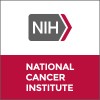
Durvalumab Alone or With Tremelimumab in Refractory Germ Cell Tumors
Germ Cell TumorBackground: The prognosis of pts who have failed multiple chemotherapy (CT) regimens is quite dismal. PD-L1 is frequently expressed by immunohistochemistry (IHC) in germ cell tumors (GCT). D is a monoclonal antibody (mAb) that inhibits the binding of PD-L1. T, an anti-CTLA4 mAb, is an immunomodulatory therapy. Combination immunotherapy has shown improved activity compared to monotherapy. The investigators aimed to investigate the activity of D, alone or in combination with T, in chemorefractory GCT. Trial Design: This is an open-label, randomized, 3-stage, phase 2 study. Pts who have failed ≥2 prior CT regimens (including high-dose CT) will be randomized to receive one of the following: D, 1.5 g via IV infusion q4w, for up to a total of 12 months (13 doses/cycles) alone or with T, 75 mg IV q4w, starting on week 0, for up to 4 months (4 doses/cycles). Serum tumor markers, computed tomography and fluorodeoxyglucose positron emission tomography (FDG-PET) scans will be repeated q8 weeks. The primary endpoint is the objective response-rate (ORR=complete response or partial response with normal markers). H0: ORR rate ≤10%, H1: ORR ≥25%, type I and II error rates at 10%. In stage 1, 11 pts will be allocated in each arm. According to Gehan's rule, the trial will be terminated whenever no response will be observed. 29 additional pts will be added to each arm fulfilling stage 1 criteria. ORR in ≥7 pts will be required. In stage 3, pts from stage 1-2 of both arms will be retrospectively evaluated for Programmed cell Death Ligand-1(PD-L1) IHC. The Ventana PD-L1 IHC assay will be used. In case of negative findings at the end of stage 2, if the target benefit is likely to occur only in PD-L1+ pts, further study prosecution in accordance with an enrichment strategy will be undertaken. In particular, predictive power (PP) will be calculated assuming expansion of PD-L1+ cohorts up to a maximum of 60 pts. Each arm will be categorized as not promising (PP<30%) or promising (PP ≥30%). The promising one will enter the stage 3. Should both arms be judged promising, the one yielding ≥20% PP advantage will be selected; monotherapy will be preferred otherwise. Details on the algorithm to be used for PD-L1 IHC in this study will be finalized (EudraCT number 2016-001688-35).

Palifosfamide in Treating Patients With Recurrent Germ Cell Tumors
Adult Central Nervous System Germ Cell TumorAdult Teratoma8 moreThis phase II trial studies how well palifosfamide works in treating patients with recurrent germ cell tumors. Drugs used in chemotherapy, such as palifosfamide, work in different ways to stop the growth of tumor cells, either by killing the cells or by stopping them from dividing

Dasatinib, Ifosfamide, Carboplatin, and Etoposide in Treating Young Patients With Metastatic or...
Brain and Central Nervous System TumorsChildhood Germ Cell Tumor10 moreRATIONALE: Dasatinib may stop the growth of tumor cells by blocking some of the enzymes needed for cell growth. Drugs in chemotherapy, such as ifosfamide, carboplatin, and etoposide, work in different ways to stop the growth of tumor cells, either by killing the cells or by stopping them from dividing. Giving dasatinib together with ifosfamide, carboplatin, and etoposide may kill more tumor cells. PURPOSE: This phase I/II trial is studying the side effects and best dose of dasatinib when given together with ifosfamide, carboplatin, and etoposide and to see how well they work in treating young patients with metastatic or recurrent malignant solid tumors.

Phase I Stereotactic Body Radiation for Metastatic or Recurrent Platinum-Resistant Ovarian Cancer...
Recurrent Ovarian Epithelial CancerRecurrent Ovarian Germ Cell Tumor3 moreThis phase I trial studies the side effects and the best dose of stereotactic body radiation therapy (SBRT) in treating patients with metastatic or recurrent ovarian cancer or primary peritoneal cancer. SBRT may be able to send x-rays directly to the tumor and cause less damage to normal tissue.

A Phase I Study of Lyso-thermosensitive Liposomal Doxorubicin and MR-HIFU for Pediatric Refractory...
Pediatric CancerSolid Tumors8 moreThis study is looking to determine the maximum tolerated dose (MTD) and recommended phase 2 dose (RP2D) of lyso-thermosensitive liposomal doxorubicin (LTLD) administered in combination with MR-HIFU in children with relapsed/refractory solid tumors, which may include but are not limited to rhabdomyosarcoma and other soft tissue sarcomas, Ewing's sarcoma family of tumors, osteosarcoma, neuroblastoma, Wilms' tumor, hepatic tumors, and germ cell tumors.

Phase II Study of Cisplatin Plus Epirubicin Salvage Chemo in Refractory Germ Cell Tumors
Germ Cell TumorThis study proposes to evaluate the combination of cisplatin plus epirubicin in patients with refractory germ cell tumor not amendable to cure with surgery or standard platinum salvage chemotherapy. This regimen will be used in eligible patients after progression on ECOG Study E39897.

First Line TIP in Poor Prognosis TGCTs.
Germ Cell TumorTIP in the 1st line treatment of GCTs patients with unfavorable decline of serum tumor markers after 1 cycle of the BEP regimen.TIP will be administered to the patient until progression, unacceptable toxicity, complete response or inability of the subject to comply with study requirements.

Study of the Hypomethylating Drug Guadecitabine (SGI-110) Plus Cisplatin in Relapsed Refractory...
Germ Cell TumorTestis Cancer1 moreThis is an open-label, single arm, Phase I dose escalation study in subjects with refractory germ cell tumor (rGCT). This phase I will evaluate the safety and efficacy of SGI-110 in combination with cisplatin in subjects with rGCT. The primary objective is to determine the maximum tolerated dose (MTD) of SGI-110 to be used prior to cisplatin. A total of 15 subjects will be enrolled in this study at the Indiana University Simon Cancer Center.

Gemcitabine, Paclitaxel and Oxaliplatin (GemPOx)
CNS Germ Cell TumorThis study will look to see how well patients with relapsed or recurrent intracranial germ cell tumors respond to the new combination of chemotherapy (in induction)of Gemcitabine, Paclitaxel and Oxaliplatin (GemPOx) followed by consolidation chemotherapy and autologous stem cell rescue.

Vorinostat and Temozolomide in Treating Young Patients With Relapsed or Refractory Primary Brain...
Childhood Atypical Teratoid/Rhabdoid TumorChildhood Central Nervous System Choriocarcinoma32 moreThis phase I trial is studying the side effects and best dose of vorinostat when given together with temozolomide in treating young patients with relapsed or refractory primary brain tumors or spinal cord tumors. Vorinostat may stop the growth of tumor cells by blocking some of the enzymes needed for cell growth. Drugs used in chemotherapy, such as temozolomide, work in different ways to stop the growth of tumor cells, either by killing the cells or by stopping them from dividing. Vorinostat may help temozolomide work better by making tumor cells more sensitive to the drug.
